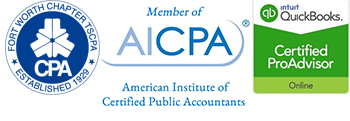Taxpayers with high incomes, complex returns: Check withholding soon to avoid a year-end tax surprise
WASHINGTON — The Internal Revenue Service today urged high-income taxpayers and those with complex tax returns to check their withholding soon to avoid an unexpected tax bill or penalty when they file their 2018 federal income tax return in 2019.
The Tax Cuts and Jobs Act, the tax reform legislation passed in December, made major changes to the tax law, including increasing the standard deduction, removing personal exemptions, increasing the Child Tax Credit, limiting or discontinuing certain deductions and changing tax rates and tax brackets.
Any of these far-reaching changes could have a big impact on the tax refund or balance due on the tax return taxpayers file next year. That’s why the IRS encourages every employee to do a “paycheck checkup” soon to check that they are having the right amount of tax taken out of their pay. The IRS Withholding Calculator and Publication 505, Tax Withholding and Estimated Tax, can help.
A checkup is especially important for those with high incomes and complex returns because they are often affected by more of these changes than people with simpler returns. This is also true if they also make quarterly estimated tax payments to cover other sources of income or are subject to the self-employment tax or alternative minimum tax.
Changes that affect high-income taxpayers
For 2018, the standard deduction nearly doubled to $24,000 for joint filers and $12,000 for singles. There were also numerous changes to itemized deductions, including:
- A $10,000 cap on deductions for state and local property, sales and income taxes.
- New limits on deductions for some mortgage interest and home equity debt.
- Higher limits on the percent of income a taxpayer can deduct as charitable contributions.
- No deduction for those miscellaneous expenses that, in prior tax years, had to exceed 2 percent of a filer’s income to qualify. These included investment expenses and un-reimbursed employee expenses such as travel, meals, entertainment and uniforms.
Many who itemized in the past may find they’ll pay less tax in 2018 by taking the standard deduction.
Do a ‘paycheck checkup’ soon
Checking and adjusting how much tax is withheld from pay now can prevent an unexpected tax bill and penalties next year at tax time. It can also help taxpayers avoid a large tax refund, if they’d prefer to have their money in their paychecks throughout the year.
Taxpayers need to adjust their withholding as soon as possible for an even, consistent amount of withholding throughout the rest of the year. Waiting means there are fewer pay periods to withhold the necessary federal tax – so more tax will have to be withheld from each remaining paycheck.
Whether someone uses the Withholding Calculator or Publication 505, it’s helpful to have their completed 2017 tax return handy to help estimate the amount of income, deductions, adjustments and credits to enter. They’ll also need their most recent pay stubs to help compute their withholding to date.
Employees can use the results from the Withholding Calculator or Publication 505 to help determine if they should complete a new Form W-4 Employee’s Withholding Allowance Certificate, and what information to include on the form.
Though primarily designed for employees who receive wages, the Withholding Calculator can also be helpful to some taxpayers receiving pension and annuity income. Recipients of pensions and annuities can change their withholding by completing Form W-4P and submitting it to their payer.
All taxpayers should remember that if their personal circumstances change during the year, they should re-check their withholding.
Taxpayers who change their withholding for 2018 should recheck their withholding at the start of 2019. This is especially important for taxpayers who reduce their withholding sometime during 2018. A mid-year withholding change in 2018 may have a different full-year impact in 2019. So, if taxpayers don’t submit a new Form W-4 for 2019, their withholding might be higher or lower than intended. To help protect against having too little withheld in 2019, taxpayers should check their withholding again early in 2019. Source: IRS.gov/IR-2018-165
As always, at McIlvain & Associates, our professional staff is here to help guide you on these ever-changing complex tax issues.


Leave a Reply